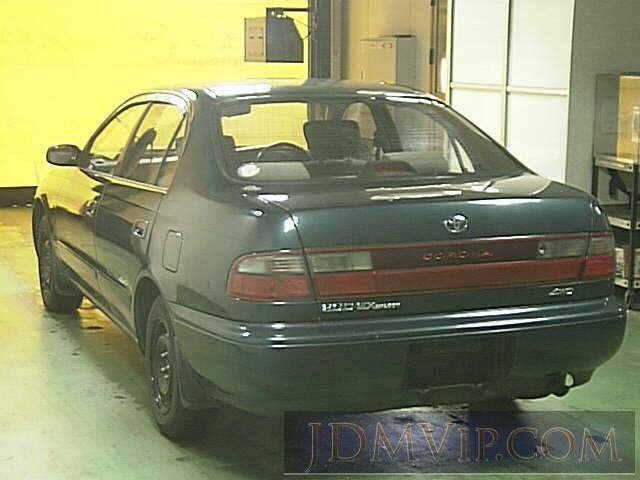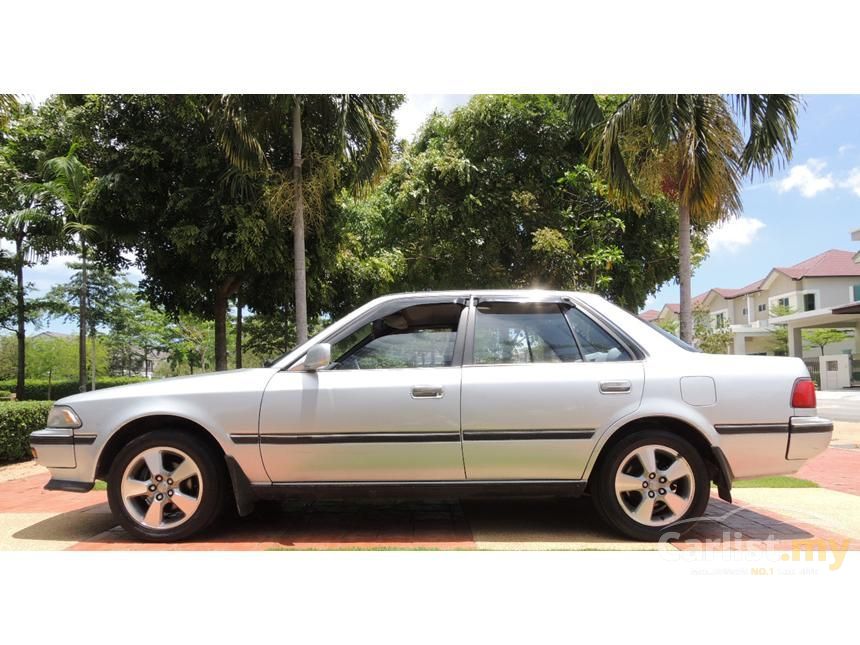

- TOYOTA CORONA 1992 DRIVER
- TOYOTA CORONA 1992 UPGRADE
- TOYOTA CORONA 1992 FULL
- TOYOTA CORONA 1992 SERIES
Introduced in March 1960, the car was powered by a 45 PS (33 kW) 1.0 L "P" series motor. The Tiara was introduced to sell alongside the Crown, as a smaller companion.

The front mask of the T20 Corona is reminiscent of the 1955–1957 Ford Thunderbird, and shares its appearance with the entry-level offering, called the Toyota Publica. At the time, there was little market for an off-road vehicle like the Land Cruiser. Their first flagship car, the Toyopet Crown, was unsuccessful in the US market, and the Corona was added to offer a choice along with the Land Cruiser. It was introduced at a critical time for the company in North America. This generation of the Corona was also known as the Tiara (in keeping with the crown naming convention) when exported by Toyota Motor Corporation. Due to the monocoque chassis, Toyota was able to produce a vehicle under 1,000 kg (2,200 lb). This vehicle was also the first Toyota's car with a monocoque chassis structure, and an independent front suspension using double wishbones.
TOYOTA CORONA 1992 UPGRADE
Due to the upgrade in dimensions of the Crown, Toyota needed to continue manufacturing a vehicle with similar size dimensions to the first Crown, primarily to be used for taxi usage. As regulations regarding taxis at the time required engines no larger than 910 cc (56 cu in), dealers restricted the power for taxi vehicles. The car also underwent another facelift, including a mesh grille and a new rear seat which allowed seating for five rather than the previous four. The P-engined Corona sedan was capable of traveling at 105 km/h (65 mph), 15 km/h (9 mph) higher than the old S-engined model. The 997 cc (60.8 cu in) OHV P series engine replaced the old S in October 1959, and offered substantially more power with 45 PS (33 kW) at 5,000 rpm. The tail light design of this generation is reminiscent of the 1949 Ford sedan. In April 1958 the Corona underwent a light facelift, with a new hood ornament and door handles. Originally, the T10/16 Corona was fitted with the old sidevalve "S" engine, with 33 PS (24 kW). Aside from the 4-door T10 sedan, the T16V 3-door van version was introduced in October 1958 as Toyopet Coronaline. The design of many of the body panels were cut down from the Master which had ceased production. The first-generation Corona, introduced in May 1957 and became available on the market two months later, was designed with parts from the previous-generation Crown and Master following a major restyle and enlargement of the Crown. The nameplate corona derives from the Latin word for "crown", the sedan taking its place just below Toyota's similarly named flagship, the Toyota Crown. The Corona was ultimately replaced in Japan by the Toyota Premio in Europe by the Toyota Avensis and in Asia, Pacific markets, and the Americas by the Toyota Camry. The Corona itself was marketed under a numerous nameplates worldwide, including in European markets as Carinas, and a variant of the Corona was offered in various markets as the Carina.

īy 1968, the Corona name was used on a larger platform, marketed as the Corona Mark II.
TOYOTA CORONA 1992 DRIVER
In 2014, editors at Car and Driver called the Corona one of the best Toyotas ever made, arguing that Toyota survived long enough to thrive in America because of the Corona. sales of Toyota vehicles to more than 20,000 units in 1966 (a threefold increase), making the company the third-best-selling import brand in the United States by 1967. The car was well received, winning the 1969 Road Test Import Car of the Year. Toyota advertised the car prominently, its first television commercial featuring the Corona.
TOYOTA CORONA 1992 FULL
The company re-entered the North American market in June 1964, rebranded as Toyota, introducing its third-generation rear-drive Corona, featuring a 67 kW (90 hp) engine, four doors, and numerous standard features (padded dash, visor mirror, full carpeting, fresh air heater and defroster, two-speed windshield wipers, quad headlamps, vinyl upholstery, driver's-side armrest, cigarette lighter, chrome wheel trim, undersealant, and twin horns), as well as available radio, factory-installed air conditioning, and a two-speed automatic transmission. Having previously entered the North American passenger car market in 1957 as Toyopet, the company met little success, withdrawing in 1961. The Corona played a key role in Toyota's North American success. The Corona was marketed in the JDM at Toyota's Toyopet Store dealership channels, and the Corona was one of Toyota's first models exported to other global markets, followed by the smaller Toyota Corolla.

On launch, the Corona was Toyota's second-highest product in their range, just below the Crown. The Toyota Corona ( Japanese: トヨタ・コロナ, Toyota Korona) is an automobile manufactured by the Japanese automaker Toyota across eleven generations between 19.


 0 kommentar(er)
0 kommentar(er)
